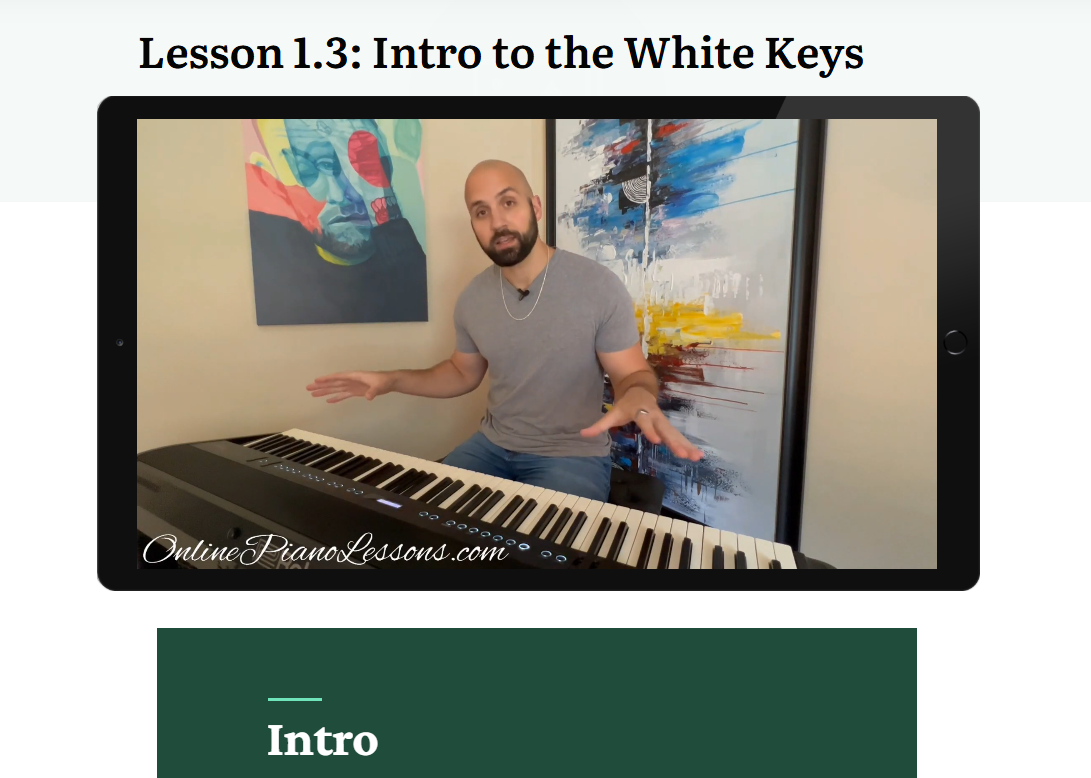Before diving deep into the world of advanced concepts and techniques, it’s important to recognize that the piano is more than an instrument—it’s a universe of sound, theory, and expression. For those who have already mastered the basics of playing piano, the next step is often a fascinating journey into more esoteric approaches that expand both artistry and understanding.
Quick Preview: This guide explores advanced piano concepts that go beyond the fundamentals, including theoretical depth, intricate sheet music interpretation, and highly specialized ways of playing piano. If you’re ready to push your skills into the realm of the advanced and uncover techniques that challenge both the mind and the hands, this guide will give you a strong foundation.
Advanced Piano Concepts at a Glance
| Concept | What It Is | Why It’s Important |
|---|---|---|
| Polyrhythms & Cross-Rhythms | Playing two or more rhythms at once (e.g., 3 against 2, 5 against 4). | Builds hand independence and rhythmic complexity. |
| Extended Harmonies | Chords with added 9ths, 11ths, or 13ths beyond simple triads or sevenths. | Creates richer, more colorful harmonic textures. |
| Reharmonization | Substituting or altering chord progressions while keeping the melody. | Expands creativity and personal expression, especially in jazz. |
| Voicing & Inversions | Arranging chord tones across registers and changing chord positions. | Shapes emotional impact and clarity of sound. |
| Advanced Pedaling | Techniques like half-pedaling, flutter pedaling, or selective pedaling. | Adds subtle textures and resonance control. |
| Rhythmic Displacement | Shifting phrases to start on unexpected beats. | Adds surprise, tension, and rhythmic variety. |
| Metric Modulation | Changing tempo by redefining beat subdivisions. | Creates seamless but complex tempo shifts in modern and classical works. |
| Esoteric Approaches | Prepared piano, microtonality, or unconventional playing methods. | Expands the sonic possibilities of the piano. |
The Role of Advanced Concepts in Playing Piano
When someone begins playing piano, they often focus on the basics: scales, chords, and sight reading. As musicians mature, they soon realize that piano mastery requires far more than dexterity and memorization. Advanced concepts help pianists navigate complex harmonic structures, analyze challenging sheet music, and interpret music with artistic depth. These advanced techniques elevate performances, transforming them from correct to captivating.
Polyrhythms and Cross-Rhythms
One of the most advanced concepts in playing piano is the mastery of polyrhythms. These occur when two or more rhythmic patterns are played simultaneously. A common example is the 3 against 2 rhythm, but advanced sheet music often contains even more complex ratios, such as 5 against 4 or 7 against 3. To master these advanced techniques, pianists must develop independence between their hands, treating each as a separate rhythmic entity.
This esoteric skill not only expands rhythmic vocabulary but also forces pianists to hear time in multiple layers. It’s a hallmark of advanced piano playing in genres such as jazz, progressive classical compositions, and modern experimental works.
Extended Harmonies and Reharmonization
Advanced piano concepts also include the use of extended harmonies—chords that go beyond the triad or seventh chord. These can include 9ths, 11ths, and 13ths, each adding a lush and complex color to music. Playing piano with these chords requires a refined ear, since improper voicing can create muddiness instead of richness.
Reharmonization is another advanced technique, where the pianist substitutes or alters the underlying harmony of a piece while maintaining its melodic contour. This is particularly important in jazz piano, where individuality and creativity are paramount. Sheet music often doesn’t fully capture these choices, leaving it up to the pianist’s understanding of advanced concepts.
The Art of Voicing And Inversion
Voicing is the way a chord is structured, and it plays a central role in advanced piano technique. Two pianists can play the same chord, yet one will sound heavy and closed while the other creates an open, shimmering resonance. Advanced pianists learn to distribute notes across registers, omit certain tones, and adjust spacing for clarity.
Inversions also take on a deeper meaning in advanced playing. Instead of simply shifting a chord’s lowest note, pianists learn how different inversions change the emotional impact of a passage. These advanced techniques allow for greater nuance when interpreting both sheet music and improvisation.
Advanced Use of Pedaling
For beginners, the sustain pedal is often treated as a simple on/off switch. However, advanced concepts of pedaling go far beyond this binary approach. Pianists can employ half-pedaling, flutter pedaling, and selective pedaling techniques to achieve subtle textures.
Sheet music may not always explicitly indicate these advanced techniques, leaving it up to the performer’s discretion. Knowing how to balance resonance without overwhelming clarity is one of the hallmarks of advanced piano artistry.
Rhythmic Displacement and Metric Modulation
Rhythmic displacement involves shifting a musical phrase so that it begins in an unexpected part of the measure. This creates a sense of tension and surprise for the listener. Advanced pianists often use this concept to add energy and unpredictability to their playing.
Metric modulation, another highly advanced technique, occurs when a subdivision of one tempo becomes the beat unit of a new tempo. For instance, the eighth-note triplet in one section might become the quarter note in another. This creates a seamless yet disorienting shift in pulse. Such advanced concepts are found in modern classical and jazz compositions, demanding both precision and creativity when playing piano.
Advanced Interpretation of Sheet Music
Sheet music serves as the map, but advanced pianists understand that interpretation is the true destination. This means analyzing harmonic progressions, recognizing motifs, and identifying hidden structures within a composition. Advanced pianists often go beyond what’s written, experimenting with phrasing, dynamics, and tempo rubato.
Playing piano at this level involves both intellect and intuition. While sheet music provides the foundation, the performer brings it to life with advanced concepts of interpretation.
Esoteric Approaches to Playing Piano
Beyond theory and sheet music, pianists who explore esoteric ideas unlock new ways of connecting with their instrument. Some experiment with prepared piano, placing objects on or between the strings to create unusual timbres. Others explore microtonality, playing with intervals smaller than a semitone, which challenges traditional Western music theory.
These advanced concepts may not appeal to everyone, but they expand the boundaries of what playing piano can mean. For pianists seeking originality, such exploration is invaluable.
Who Benefits from Advanced Techniques?
Advanced concepts in piano are not just for virtuosos. Any pianist who wants to deepen their artistry can benefit from them. Whether you’re a jazz musician looking to expand your improvisational vocabulary, a classical pianist interpreting 20th-century repertoire, or a composer searching for new sounds, these advanced techniques enrich your playing.
Even for those who don’t perform publicly, exploring advanced piano ideas can bring joy and intellectual satisfaction.
Conclusion
The piano is an instrument of endless depth, and advanced concepts only scratch the surface of what’s possible. By exploring esoteric ideas in sheet music, music theory, and practical playing techniques, pianists move beyond the mechanical and into the realm of artistry. Mastering advanced techniques takes patience and curiosity, but the rewards are profound—transforming the act of playing piano into a lifelong journey of discovery.
FAQ
What makes advanced piano concepts different from basic techniques?
Basic techniques focus on building fundamental skills, while advanced concepts involve nuanced artistry, deeper music theory, and esoteric approaches that require more experience and control.
Do I need to read sheet music to learn advanced concepts?
Yes, most advanced piano concepts rely on strong sheet music reading skills, though some modern or experimental approaches can be learned aurally.
Are advanced techniques necessary for casual players?
Not always, but learning them can greatly enrich your understanding of music and make playing piano more enjoyable and expressive.
How long does it take to master advanced piano techniques?
This varies depending on practice, dedication, and prior experience. Some concepts may take months, while others are refined over a lifetime of playing piano.
Can advanced piano concepts help with improvisation?
Absolutely. Advanced knowledge of harmony, rhythm, and articulation provides a toolkit for improvisation across genres like jazz, classical, and contemporary music.





 Hi, I'm Thomas, Pianist Composer,
Hi, I'm Thomas, Pianist Composer,  I love playing piano, creating new melodies and songs, and further developing my online piano course and making updates/additions to my site OnlinePianoLessons.com!
I love playing piano, creating new melodies and songs, and further developing my online piano course and making updates/additions to my site OnlinePianoLessons.com!  Now that is what I call fun!
Now that is what I call fun!





